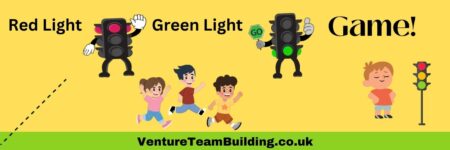When teaching a workshop, it is important that your learning space should be comfortable, with plenty of natural light and air circulation and the room temperature is set a comfortable level.
The workshop space, should be set-up to encourage participation – a circle of chairs works well as everyone can see each other and fully interact with one another. I personally like to clear all tables away as this creates less of a boardroom or classroom like atmosphere and is more practical for breaking your group into smaller learning groups for group discussion and brainstorming.
You should also check your equipment prior to your workshop. Check to make sure your presentation screen/projector is working correctly and you have all the learning tools you need such as flip chart paper, pens and any information handouts. If you are running a practical workshop then make sure you have enough equipment for all participants and that it is safe for use.
When scheduling your workshop, add breaks for your learners and ensure they have tea and coffee available. Aim for a 20 minute break every 90 minutes. During the workshop, have water or juice available for your group – this prevents dehydration which can affect learner’s focus and mood.
We learn best when we are challenges, comfortable in our surroundings and having fun. Try to make your workshops as practical as possible and engage your learners. Stay away from ‘chalk and talk’ and ‘death by PowerPoint’ methods of teaching. Use questions to engage your group and try to draw learning points from them through group discussions, group work and debates. Try to facilitate knowledge based learning through self-discovery and experiential activities.
If you are going to be using PowerPoint, use it to recap key learning points only and then move on. Try to keep the information on the slides to a minimum. The slideshow is there to prompt the trainer and not to teach the group (you are). Stick to three to four bits of information (enough for our short term memory) and try to use images instead of words.
The most difficult time for teaching is the session straight after the lunch break. Plan so the first half is fun, practical and reinforces your learning outcomes. Take the learning outside the classroom and maybe try some team challenges to break up the training and keep your group focused.
Try to use as many teaching methods as possible, these include: Reflection, group discussion, brainstorming, note taking, reading, presentations, role plays, debates, subject specific exercises etc. The more teaching methods you use, the more engaging your workshop will be and you’ll be able to connect to different types of learners.
Here are a few more essentials tips:
Ice Breakers: After introducing your workshop, mapping the day and discussing your aims. Provide a quick ten minute ice breaker. The objective of this, is to help your learners feel as comfortable as possible in the learning environment. Using an ice breaker will get them talking and breaking down barriers from the get go. It can be quite intimidating meeting people for the first time and many learners refrain from giving their opinion or asking questions out of fear of judgement – eliminate this fear from the start.
Background Music: Use background music during group discussions or reflective moments as this creates a more relaxed learning environment and changes the mood and tone of the room. Use music based on the mood you are trying to convey.
For example:
- The Rocky theme gets learners excited
- Soft Piano relaxes learners
Pictures and Posters: Find pictures and posters that have relevancy to the subject you are teaching. These are powerful sources of memory and will prompt learners think about the subject. Place there around your learning space.
Group Work: Research shows that over 90% of information which enters our brain is visual. Our eyes can register 36,000 visual messages per hour. Provide flip chart paper when doing subject and any group work (brainstorms, group discussions) and ask them to note down what they come up with. Once they have finished, stick the finished work to the wall to reaffirm learning and help your group remember the learning journey.
Colours: Research shows that when information is presented using different colour codes, it is more likely to be remembered.
Question boards: Provide an area, where learners can put post-it notes with any questions, ideas, worries they have at the start of the workshop or during breaks. Normally I frame my workshops, by asking learners one thing they want to learn about the subject and sticking these to the question board – at the end of the workshop I recap the questions and ensure that I answer them (normally the questions are covered during the actual training workshop).
Reflection Board: Similar to the question board but have learners use post-it notes to identify what they learnt from the session instead. This gives them thinking time to reflect on the subject and what has been covered during the workshop.



